St Cleer Parish Church

Beez Neez now Chy Whella
Big Bear and Pepe Millard
Mon 28 Apr 2014 22:27
|
St Clarus, St Cleer Parish
Church, Cornwall
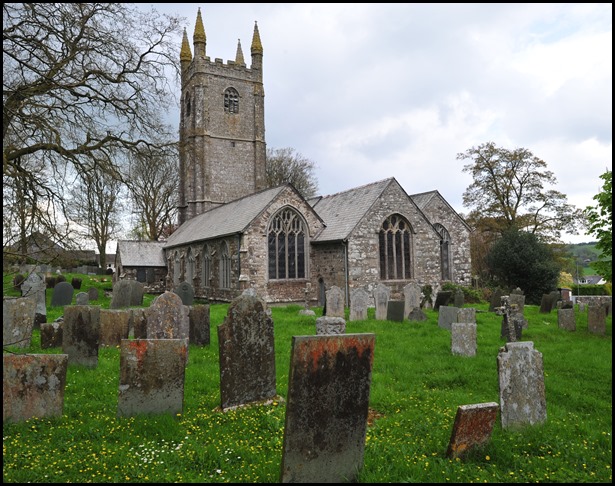 After lunch we walked down to the Church of St. Clarus. He was an English missionary martyred in about 894 near the River Epte in
Normandy. Geoff had promised us a bell ringing lesson, but first we had a
look around this lovely old church.
Excerpts
taken from the Parish Booklet, with grateful thanks. The position of the present
church building is most probably the site of St. Clarus’s 9th century wattle and
daub oratory. Rebuilt by the Normans, the church was enlarged towards the end of
the 13th century, undertaken by the patronage of the Knights Hospitallers of the
Order of St John of Jerusalem. More additions were undertaken in the 14th and
15th centuries. The very fine granite tower belongs to the 15th century
improvements, it stands ninety seven feet high with four very typical Cornish
pinnacles.
As can be seen on entering the
building, additions and changes have continued to be made up to the present,
accommodating the changing needs of a living community.
The Cornish
inscription outside the church porch reads “Wolcum yth-ough dh’agan egios” –
Welcome to our church.
A welcome indeed met John Wesley who
visited twice in September 1751 on the afternoon of Friday the 13th and again on
Tuesday the 24th. His diary for that day reads, “.......reached St. Cleer. The
house – St Cleer Church – would not contain half of the people; so I stood in
the porch that all, both within and without might hear. Many from Liskeard were
present, and a solemn awe was upon the assembly.”
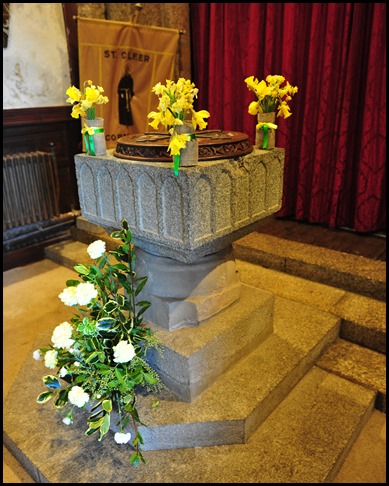 The Baptismal Font has a Norman granite bowl.
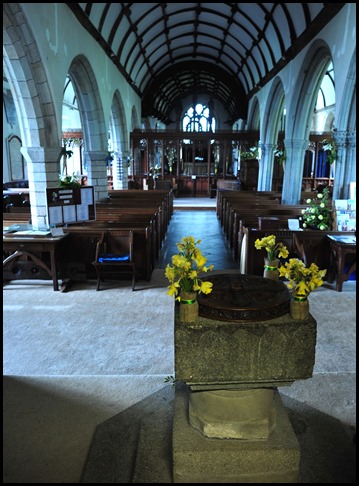 Looking to the Main Altar from the back
of the church. Notice stocks to the left of
picture.
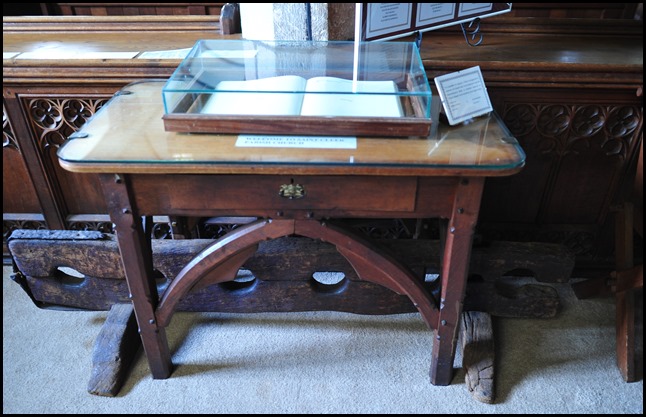 In
1744, the parish stocks cost the churchwardens ten
shillings and sixpence and were later in pretty constant use with the bad
behaviour of the miners. Later still the 19th century Police House, next
door, was the first village Police Station in Cornwall, built especially
to deal with drunken misbehaviour – it has two cells for the
purpose.
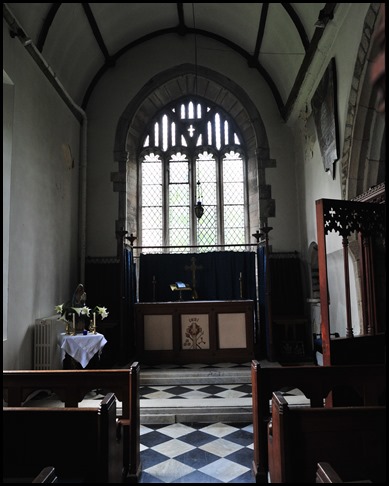 The Lady
Chapel contains a Georgian monument to Nicholas and Mary Connock of
Treworgey Manor and also a “leper’s squint” which looks through to the main
altar.
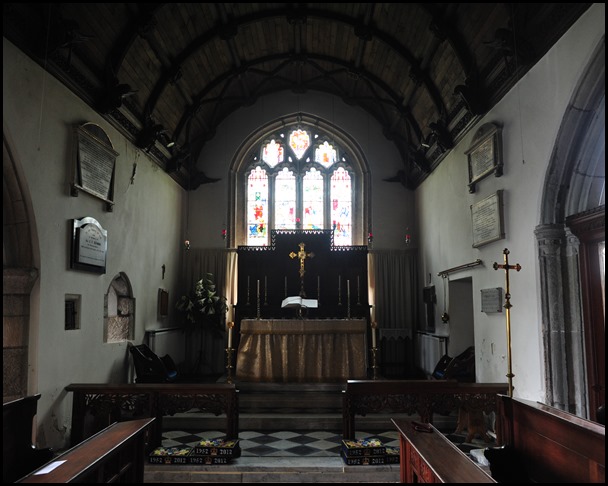 The Main Altar.
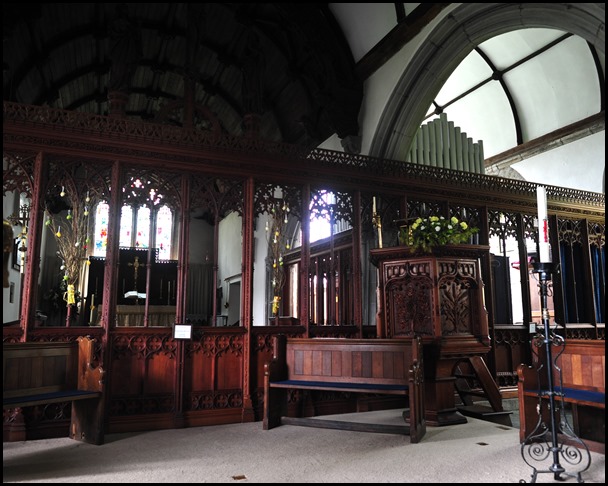 The two-manual organ,
beyond the pulpit, is by Albert Keates of Sheffield was
installed in 1924. It was cleaned and restored in 1968 and again in 2006.
A comprehensive restoration of the church took place in 1904
under the direction of London architect Mr George Fellowes Prynne. A new floor
was laid, the box pews were removed, and interestingly “relocated” to panel the
upstairs rooms in the Vicarage. The box pews were replaced initially by chairs
and later by the carved oak pews. The chancel roof with its choir of angels, the
reredos, and the choir stalls were added at this time, with the teak screen made
by H.H. Martyn & Co. of Cheltenham.
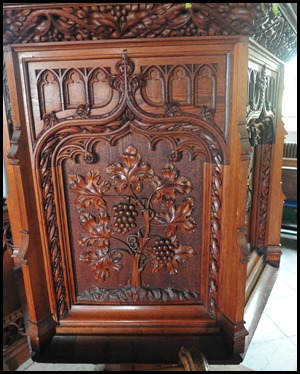 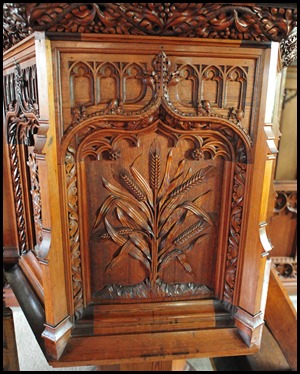 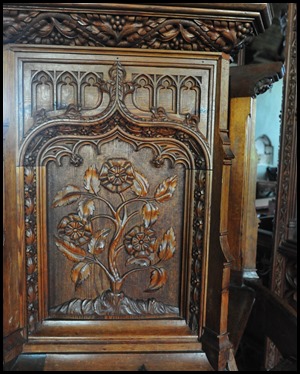 The very
fine panels of the carved pulpit of pitch pine is late
Victorian.
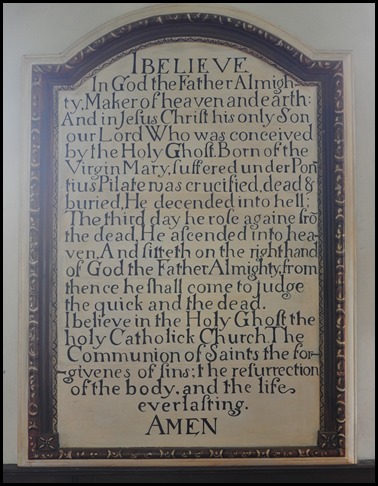 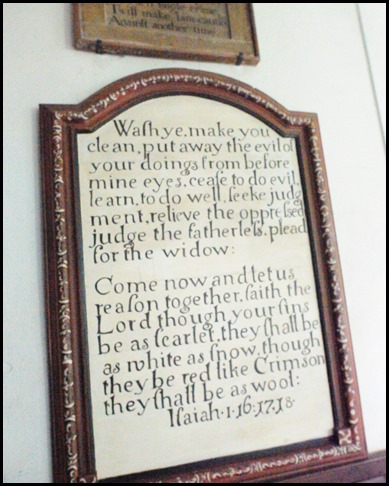 The interior of the church
contains numerous interesting features, the most important being the 17th century wooden text boards,
eighteen in number, unique as far as Cornwall is concerned and rare in the rest
of the country. Robert Norris of North Bohetherick restored the text boards in
1976. Our favourite was the Langford
Creed.
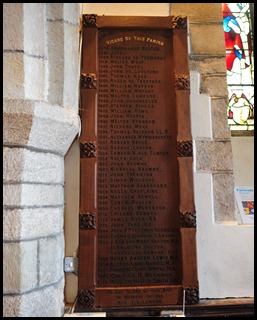 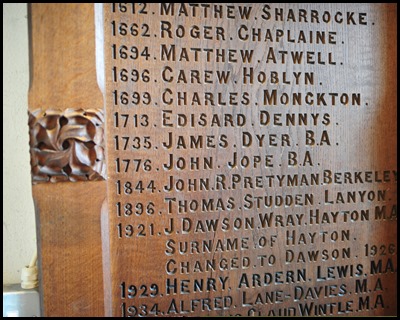 The list of
Vicars, meticulously
carved.
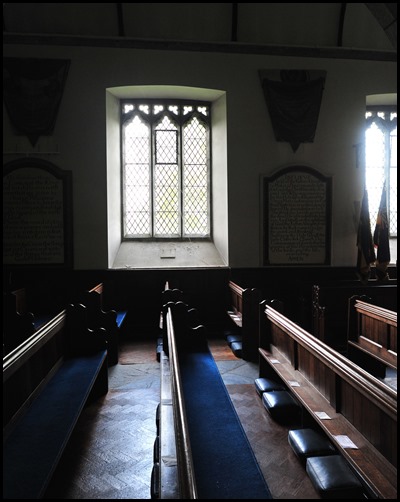 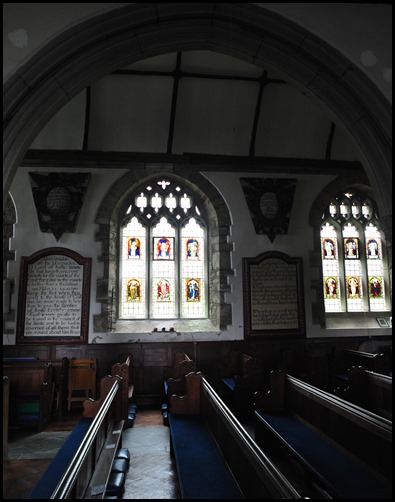 No ancient stained glass
remains. The North aisle windows are plain. The South
aisle glass is Victorian and portrays various female
saints. It originally came from the mission church at nearby Draynes.
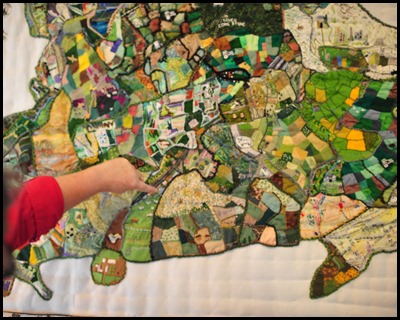 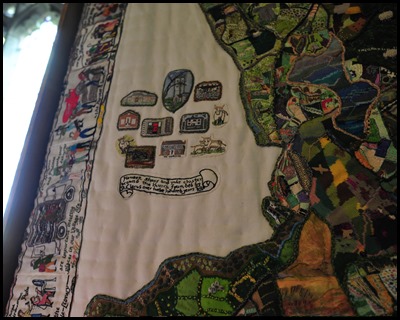 Sabby points out
home, top left of the special
inserts.
The St Cleer
Millenium Map hangs by the North door. This wonderful work is the product
of several hundred local people, aged between four and ninety eight years. It
represents all the organisations and groups within the parish. It covers
incidents of wandering cattle blocking traffic in the village, to the debate
over hunting with hounds to the importance of the mobile library.
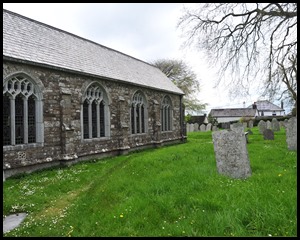 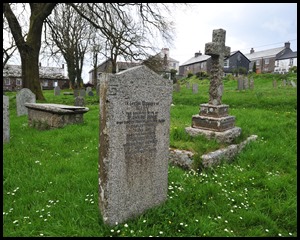 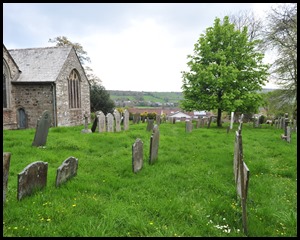 A bimble around the memories of passed parishioners.
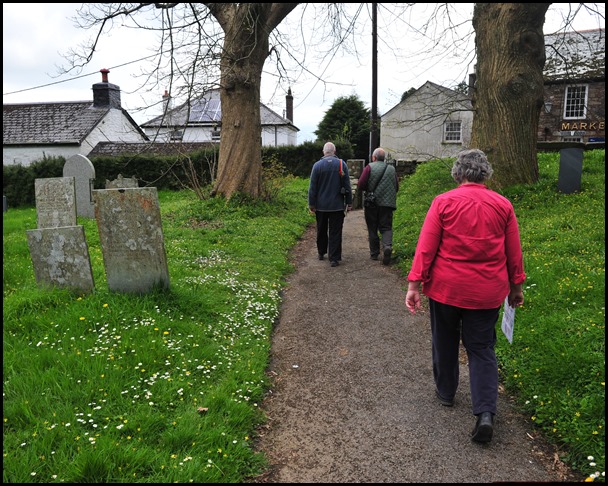 Homeward
bound after such an extraordinary visit to this very special church.
We would need so much more practice to join the bell
ringers.
ALL IN ALL SO VERY WELCOMING
VERY
LOVELY |